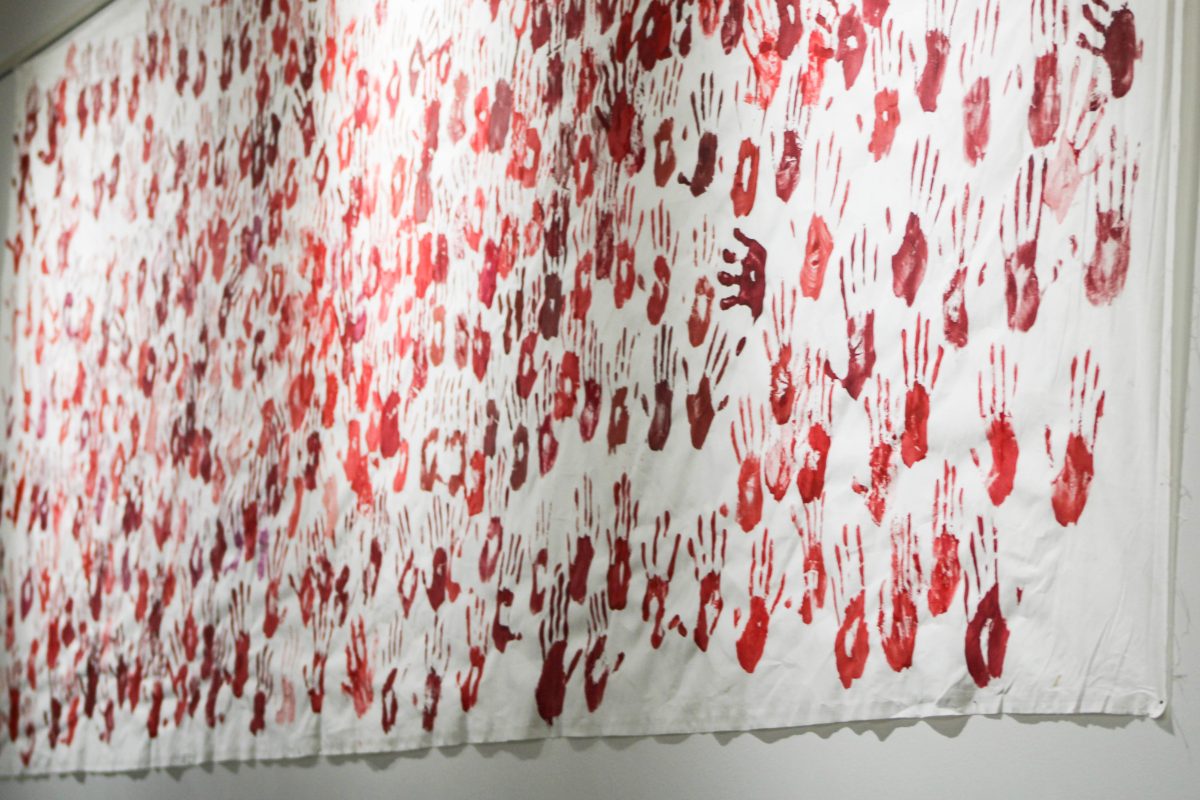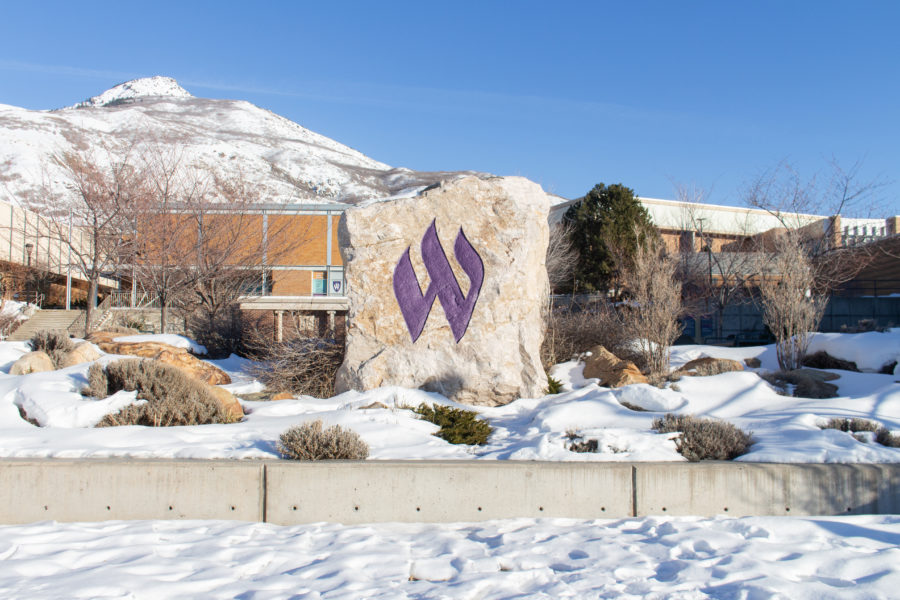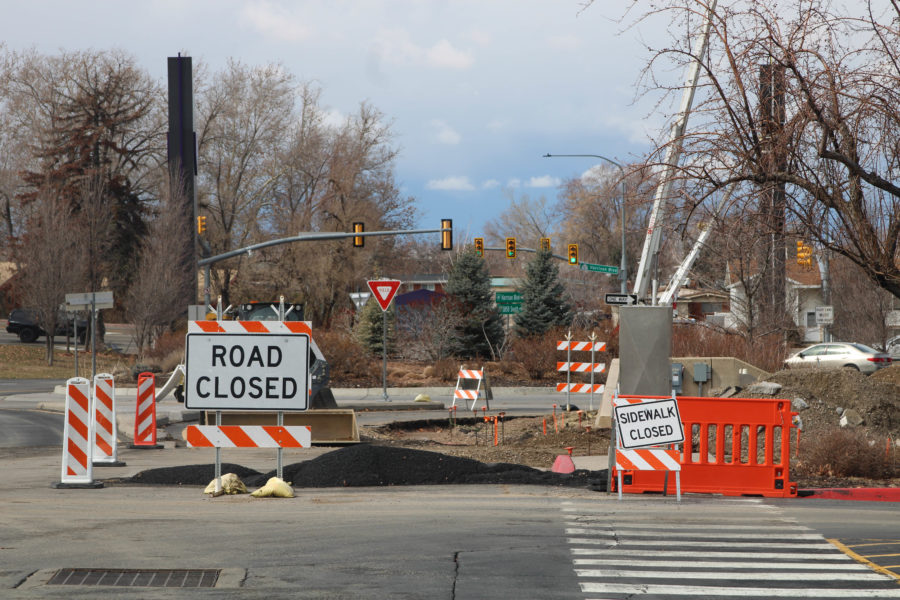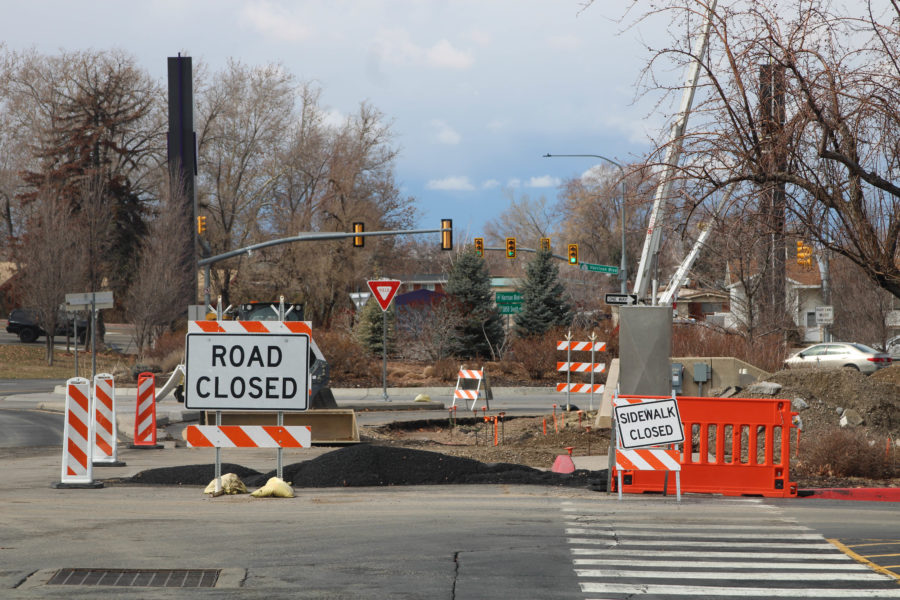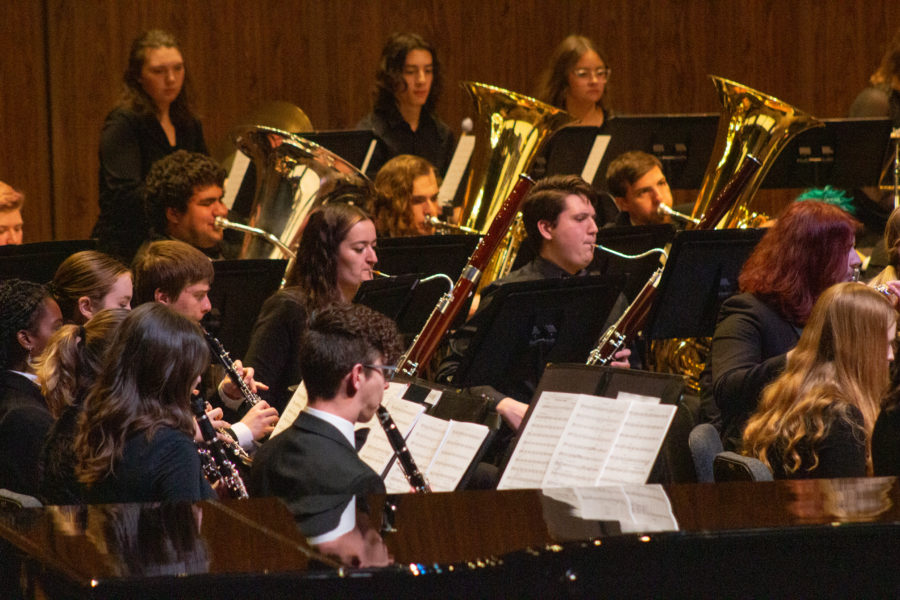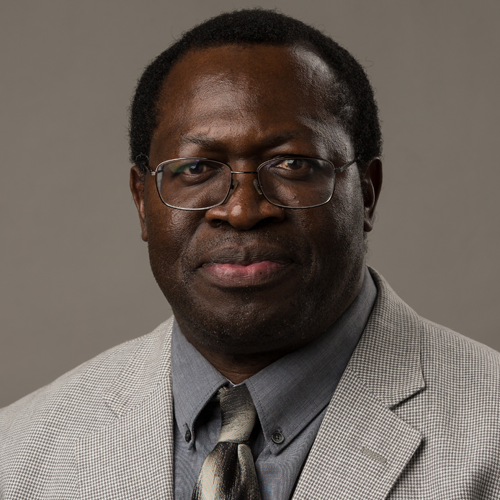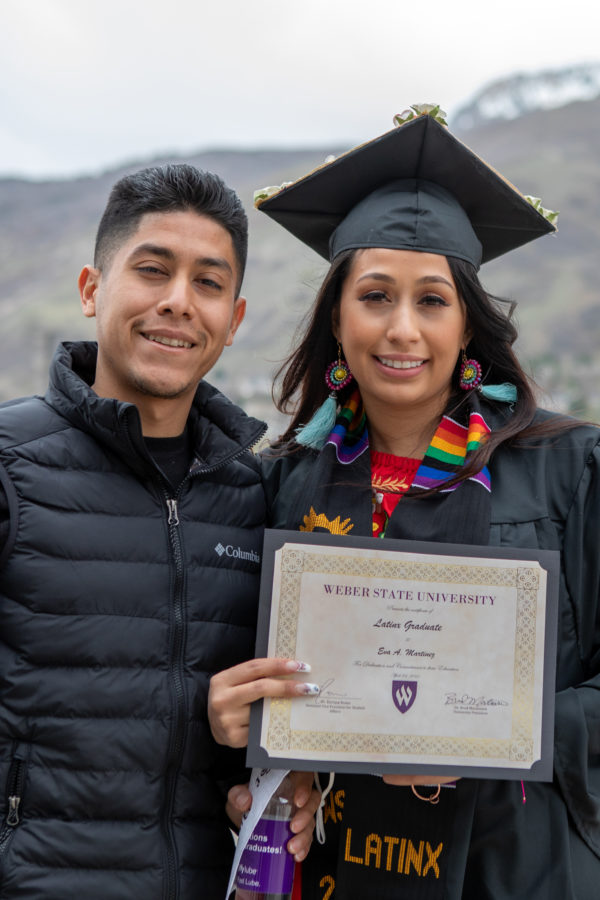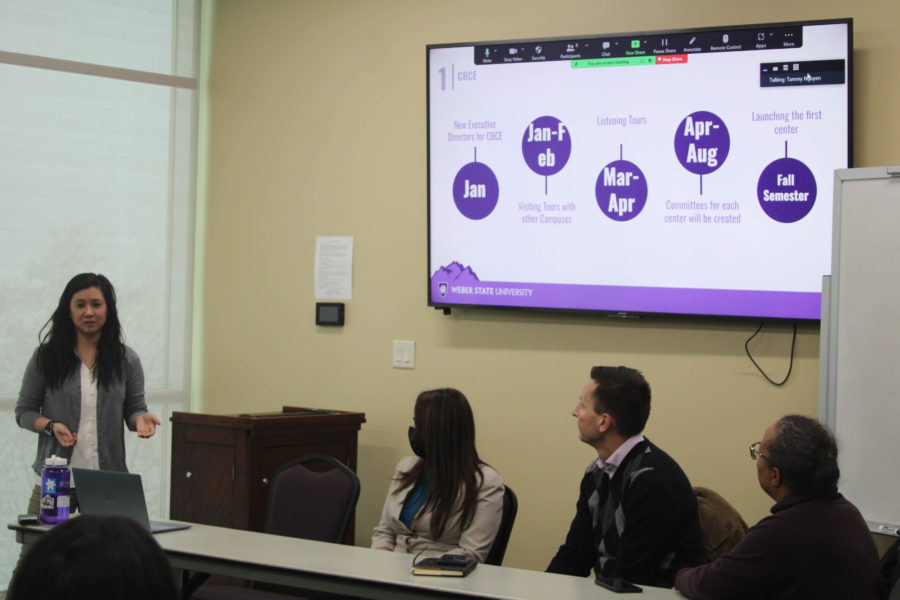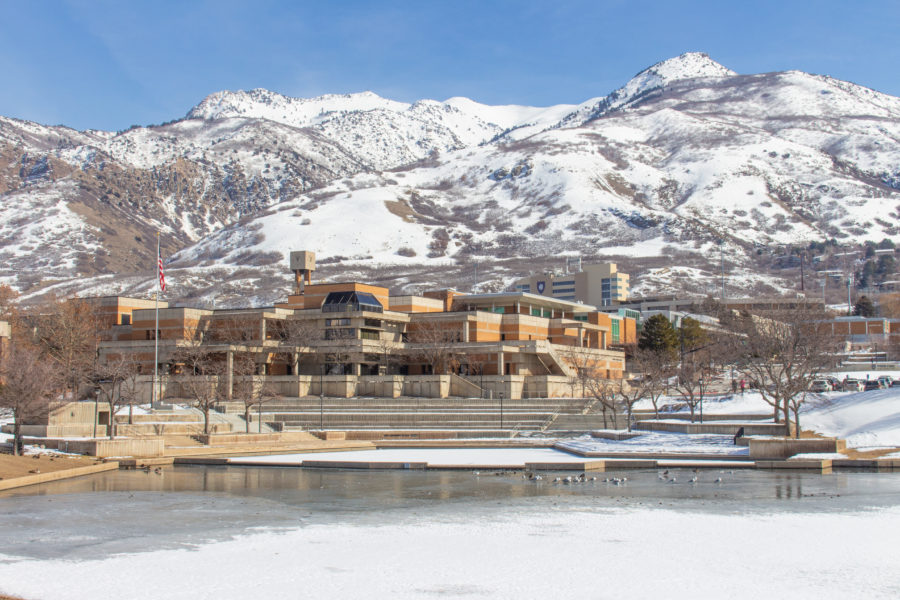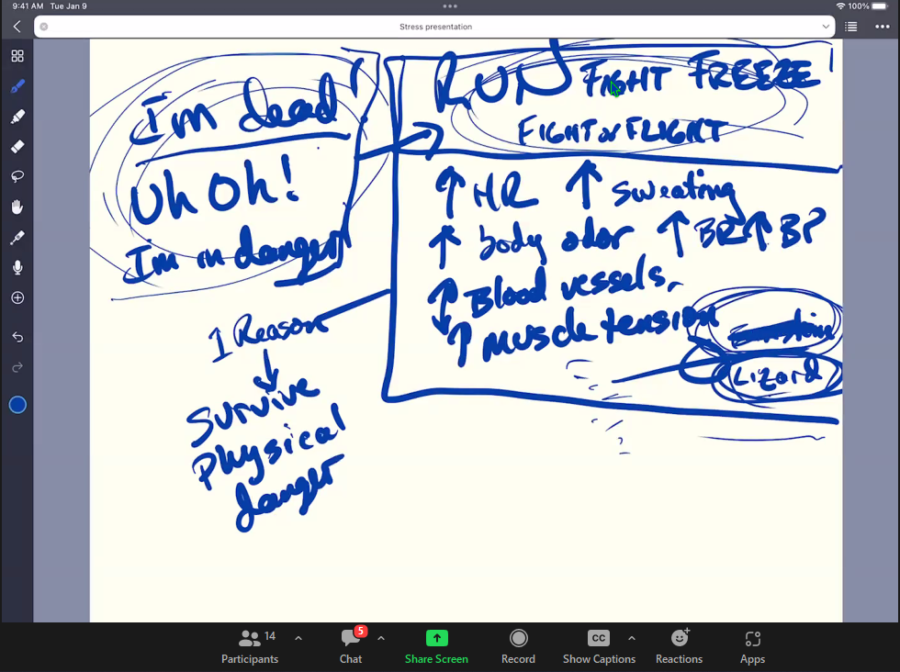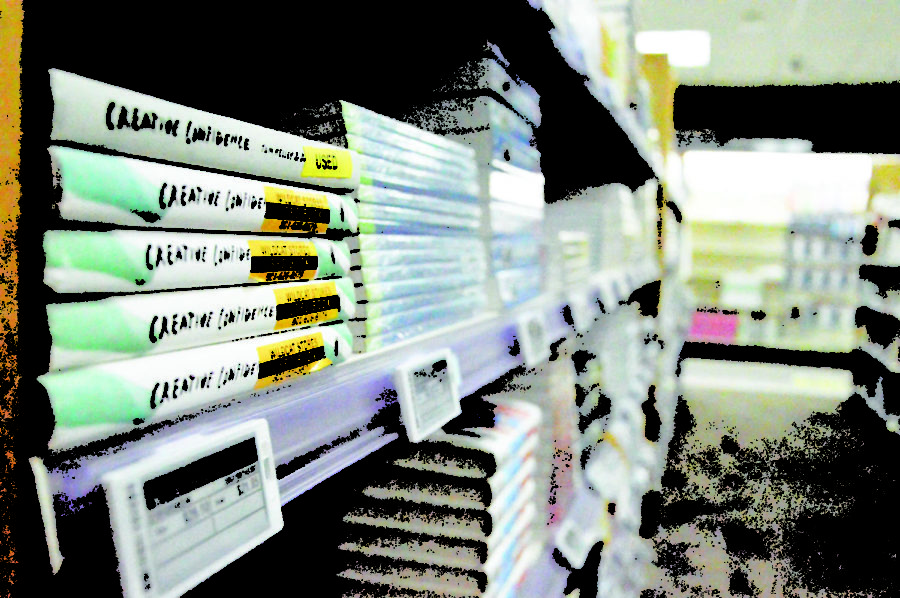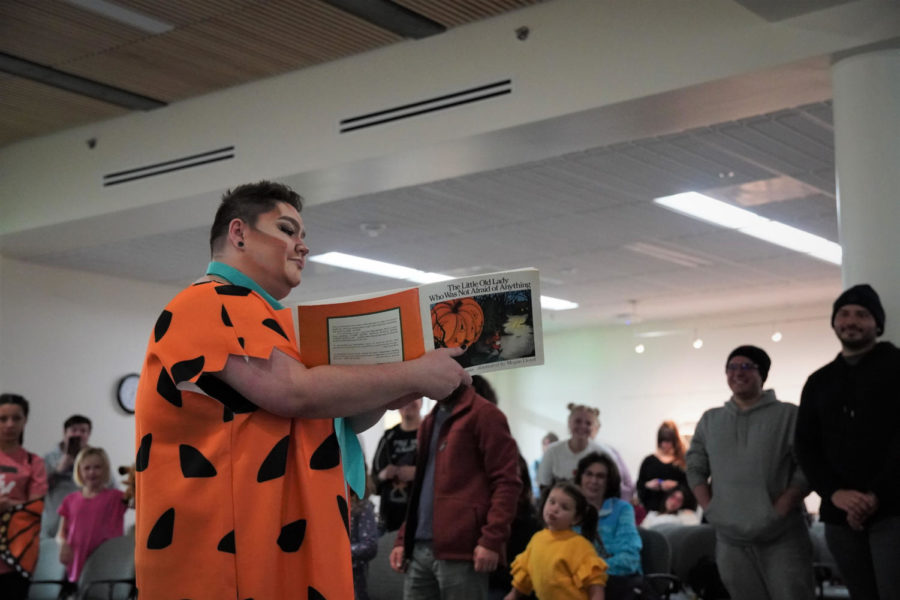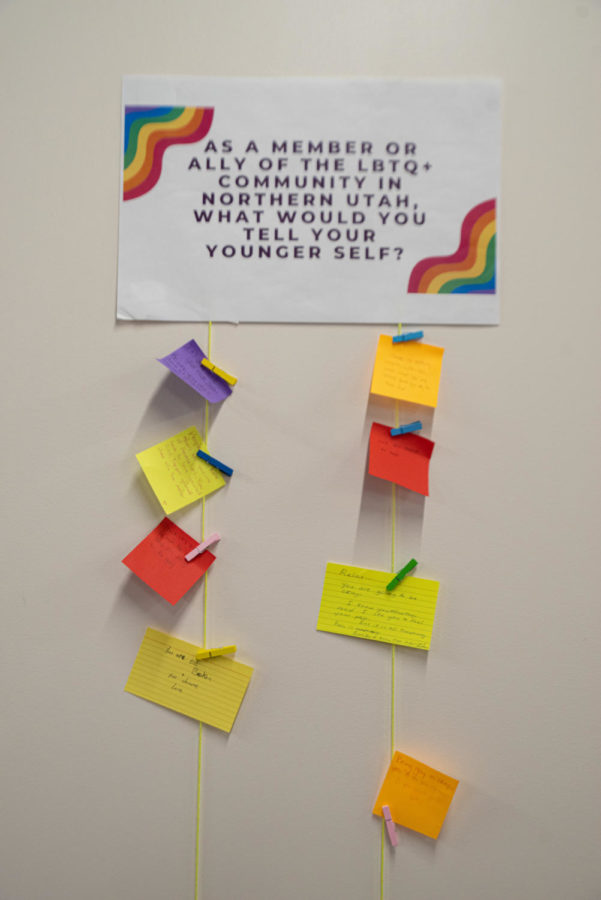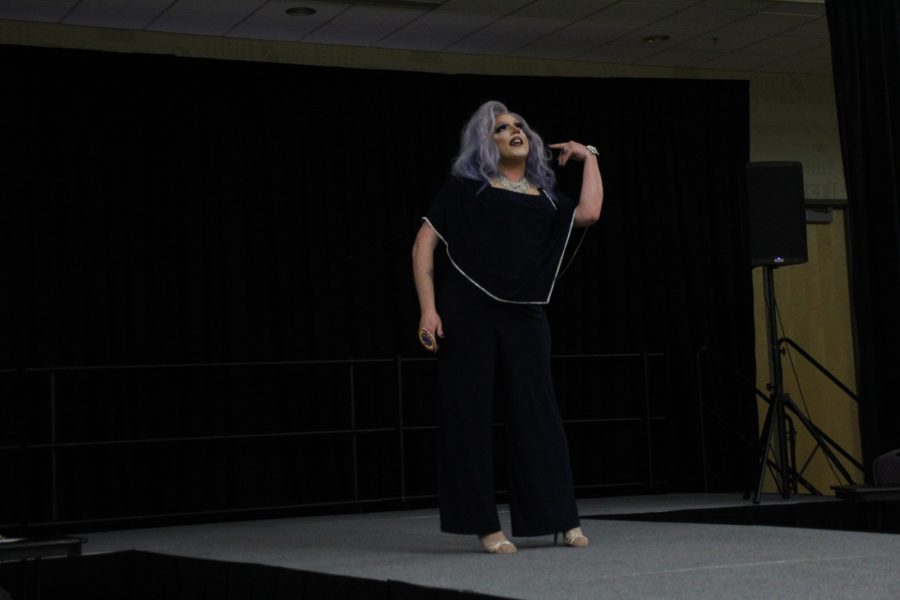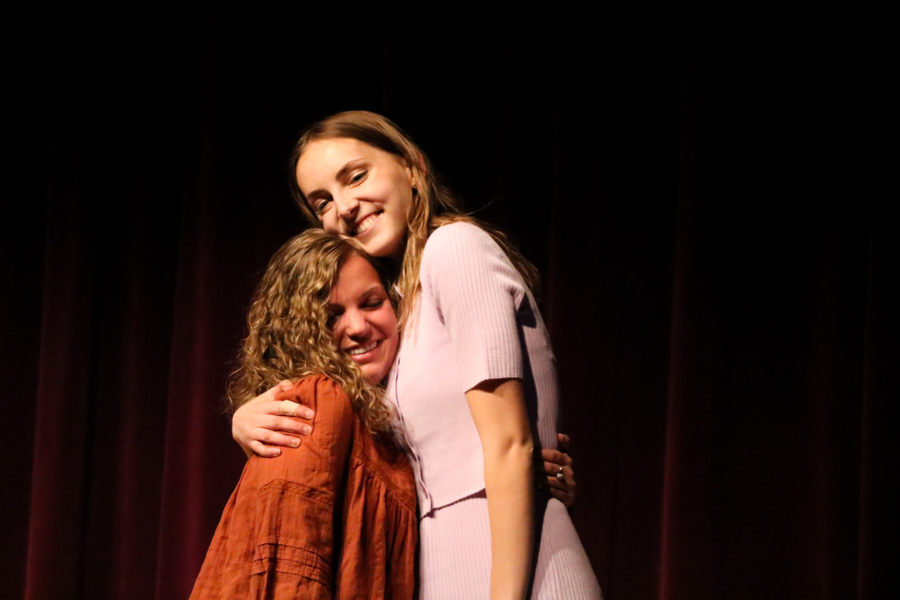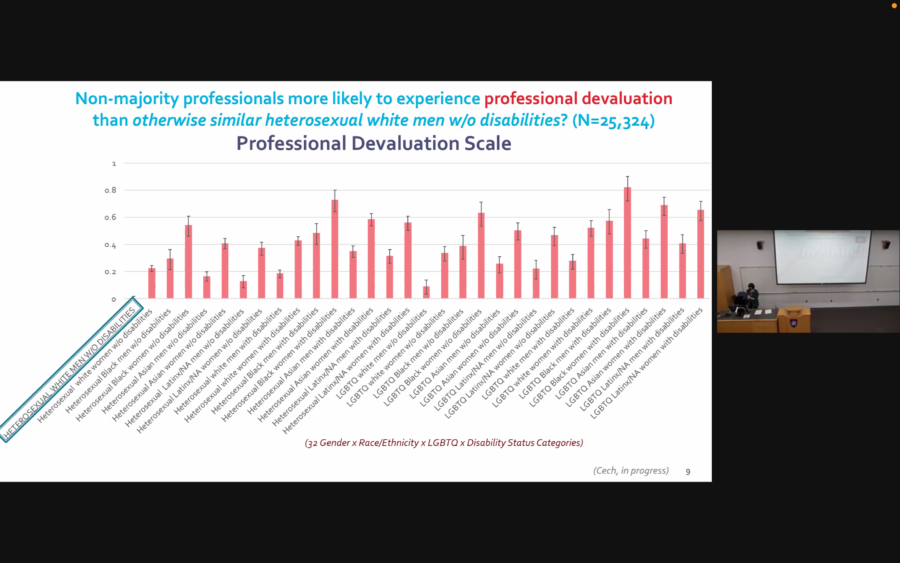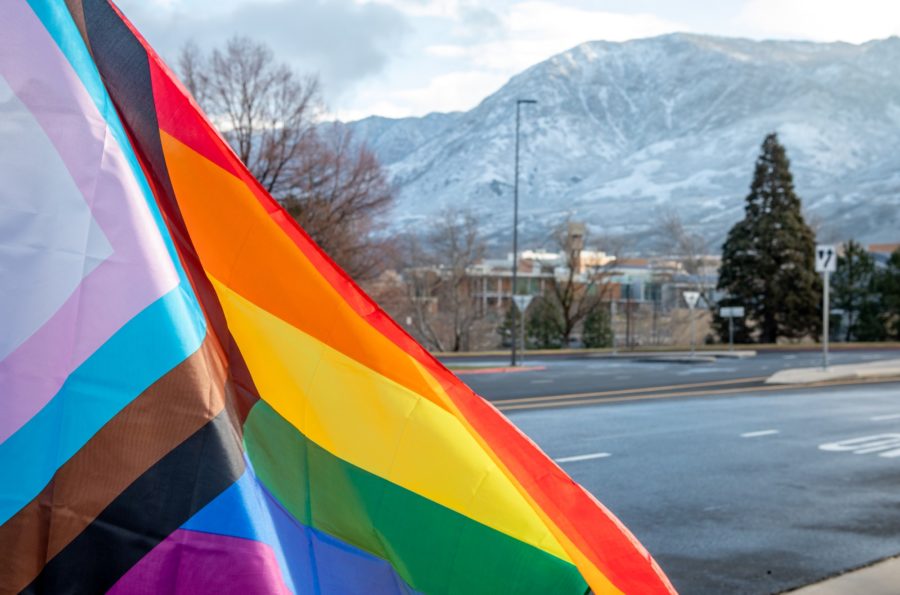It’s no secret that there is tension between the LGBT community and members of The Church of Jesus Christ of Latter-day Saints. For people who are “gay and Mormon,” this tension is not only an outside force, but an internal battle between their two identities.
As part of their macro-level social work class project, social work majors Brooke Cowley and April Skeem hosted the panel, “A Rainbow to Heaven,” to bridge the gap between these two seemingly opposing communities.
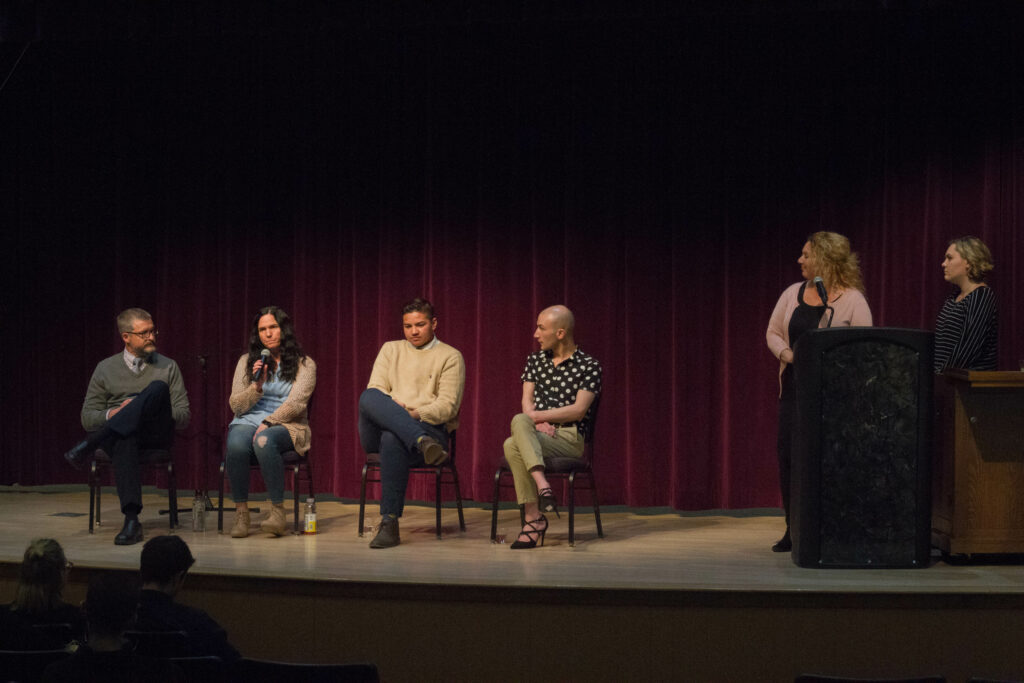
Cowley admitted that while she was nervous about putting on the event, she felt it was important these two communities find a way to blend together.
The beginnings of this panel started when Cowley went to the LoveLoud Festival created by Imagine Dragons band member Dan Reynolds and watched the documentary “Believer,” which documented the creation of the LoveLoud Festival.
While not experiencing discrimination and stigma herself for being part of the LGBT community, Cowley did feel she understood a bit of what that stigma felt like.
“I’ve felt a little bit a stigma for mental health, coming home from my mission early with depression and anxiety, so I feel like I can relate in a way with that discrimination, but in a different sense,” Cowley said.
Skeem agreed with Cowley, and she hoped this event would create a bridge between the two communities.
“I think the lack of support has led to a lot of suicide, isolation, different problems, but we’re hoping to make a bridge with the main church here (in Utah) and see if we can help the two communities maybe have a little more respect and compassion for each other,” Skeem said.
The event was comprised of a panel of five people who represented various intersections between the LDS church and the LGBT community. Cowley and Skeem moderated and asked panelists questions about their experiences with the relationships between the LDS church and LGBT community, including what they thought the greatest barrier between the groups was.
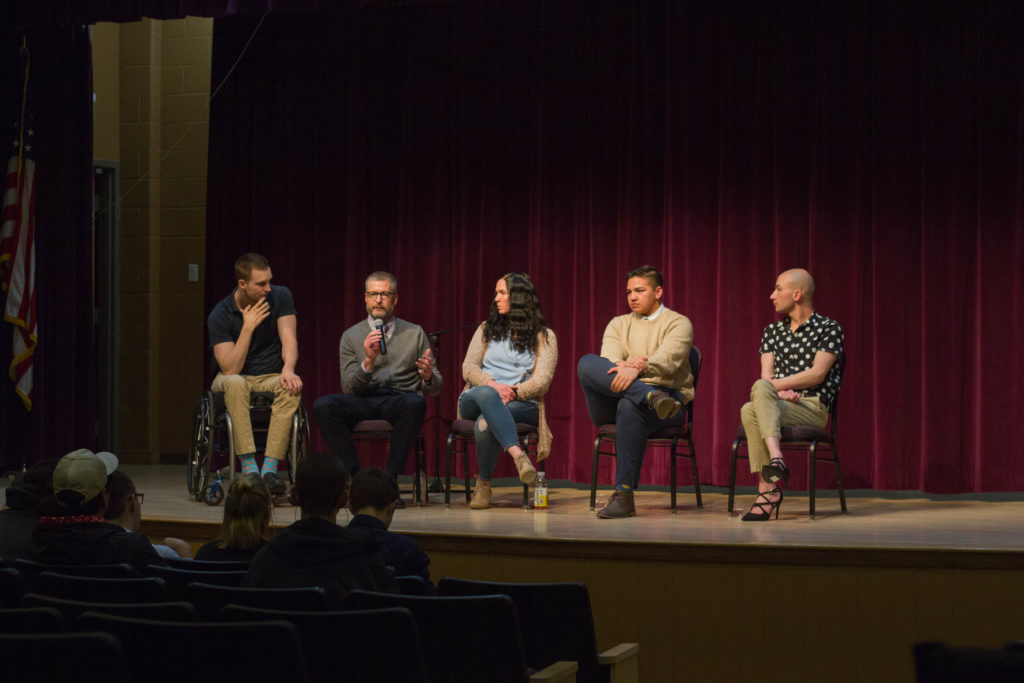
A consensus among the panelists was the misconceptions held on both sides. Panelist Kole Pei, an active transgender member of the LDS church, said many members of the church feel uncomfortable because they feel the LGBT community wants to change the church and change the doctrine without listening to members’ feelings.
Carson Tueller, a former member of the LDS church and a gay man who works with Affirmation, gave an example, talking about his relationship with his mother when the LDS church created its November 2015 policy that said all members who were in a same-sex marriage were considered apostates and the children of these marriages could not receive church blessings and covenants. The policy was later reversed in 2019.
“I was so determined that my mom come my way 100 percent that I was incapable of listening to what her experience was like as a mother,” Tueller said. “That she was navigating her own very complex experience with her faith and grieving certain things and trying to do her own process.”
As a gay man, Tueller felt justified in his actions because he felt he was more marginalized and that his mother needed to understand him and his struggles, but it only weakened their relationship.
“That really put a wall between us because I put conditions on how my mom loved me,” Tueller said.
However, he said that once he practiced giving her unconditional love and acceptance without putting requirements on how she could love, they rebuilt their relationship.
While Tueller acknowledged the pain that many LGBT people face because they feel that kind of conditional love, he said it’s important to still give unconditional love to those who may hold anti-LGBT views.
“It’s almost like we’re doing some modeling and saying, ‘This is what we’re looking for and we’re going to exemplify what we’re looking for,” Tueller said.
Overall, many of the panelists stressed that to combat these misconceptions, education and advocacy were important tools.
Nathan Winterton, a former member of the LDS church and a gay man who works as a public speaker, believes that because members of the church may not be educated on LGBT topics, members may say harmful and hurtful things casually without realizing it.
Jen Bastian, an active member of the LDS church and ally for the LGBT community, was tired of these misconceptions and mentioned how her son had come to her and told her the preconceptions that people had about him because he was gay, including associating him with pedophilia.
Bastian takes pride in the efforts she made to understand her son and the greater LGBT community as a whole. So hearing the comments that people make because they don’t know or refuse to learn about the LGBT community irritates her.
In her opinion, allies are an important part in breaking down these prejudices and preconceptions.
“People are dumb. It’s our job (as allies) to educate them,” Bastian said. “We need to stop being so dang silent. If we know stuff and know it’s true, don’t keep your mouth shut. Open it up. Go tell people. It’s your responsibility.”
Later, Cowley asked the panelists whether it was better for LGBT members to stay in the church or leave.
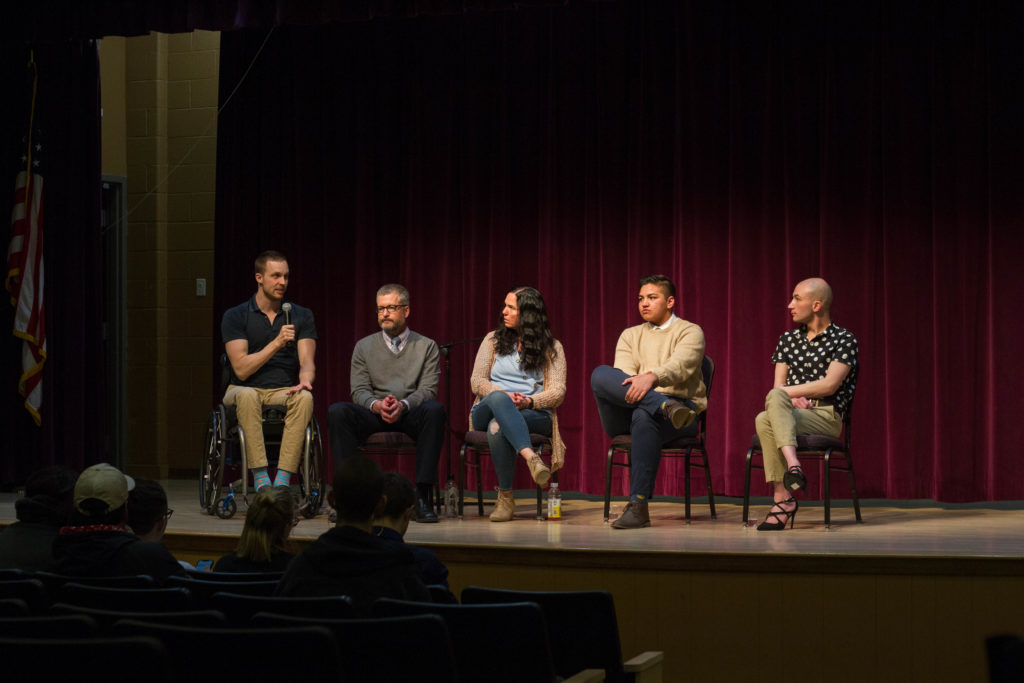
Jason Williams, a licensed marriage and family therapist, said that it was up to the individual. He said if the member felt comfortable staying in the church and it was something they felt strongly about, then they gave their congregation a voice it might lack if they left.
While she stays in the church for other reasons, Bastian said that she also stays to educate her fellow members.
For Pei, he stayed because the members of the church were his biggest support group, despite what President Dallin H. Oaks said about gender being eternal. Pei’s cousin’s family were very supportive of him after he came out as transgender.
“The reason I stayed is because when I almost left, the most validation and the most love, the most care that I received in that time of need was from members. It’s my biggest support group,” Pei said. “I know that there’s room for change and that there’s room for love to drive hate out.”
But not everyone believed staying was the best choice. Winterton left for his mental and physical health, as it was the cruelty of members and their words muttered under their breath that drove him away.
Earlier, he mentioned how when he came out the first time to his bishop, his bishop recommended he go through conversion therapy.
“After going through different forms of it for too long, it just took too much out of me, so I attempted to end my life,” Winterton said, ” and succeeded for a minute and a half.”
When he woke up from his medically-induced coma, his parents asked him why he tried to commit suicide, and he said he screamed at them, “I’m gay” and that he was afraid they didn’t want him.
Winterton’s mental and physical health improved, but he couldn’t go back to church because he was triggered by church events.
Tueller also left, requesting that his name be removed from the records of the church. He did laugh as he mentioned he requested his name to be removed the night before he became the president of Affirmation, becoming even more immersed in church history and politics than he was as a member.
He was in church buildings often, trying to push for equality as diplomatically as possible to build bridges between the two communities.
But at the heart of this question, the panelists said that people needed to be true to their individual self, regardless of whether that meant being a member or leaving.
Questions were opened up to the audience and one person asked what the ideal world would look like if these two communities were going to be one.
Tueller and Winterton pointed out that while LDS members of the church are afraid of doctrine and policy change, it needs to happen for queer members to be equal to their straight, cisgender peers.
“There is no queer narrative inside of or that fits in comfortably in LDS doctrine,” Tueller said. “To become like God is to be heterosexual, to marry someone of the opposite sex in the temple, and to be cisgender.”
According to him, the current doctrine means that either there is something that hasn’t been revealed yet, or queer members have to accept their orientation or gender identity as an earthly flaw. But because queer members have had their feelings validated by God, the problem they see is in the doctrine.
To him, that’s the base conflict. In his ideal world, there needs to be a way for queer members to reach exaltation in the same way that their straight counterparts do. Otherwise, queer members will continue to have a sub-status in the eyes of God and the church.
For audience members, this panel gave them hope about breaching the gap between these identities.
Glenn McRae, while on a date with his boyfriend, was excited about the event.
“I wanted to be up onstage answering questions too!” McRae said. As a member of the LDS church and because he was gay, he felt he also had a story that would help people.
He said at first, coming to terms that he was gay was hard. But as he went to the temple and prayed about it, he received an answer in three parts.
“‘You’re still my son, I still love you, just keep doing good,'” McRae said.
He was positive about reconciliation, hoping that one day that there would be something in place for him. However, there was one thing he wanted to ask of people.
“(Don’t) remind me of how God feels about it because I know. I’ve received my own answers to prayer. I know what He wants me to do,” McRae said.



